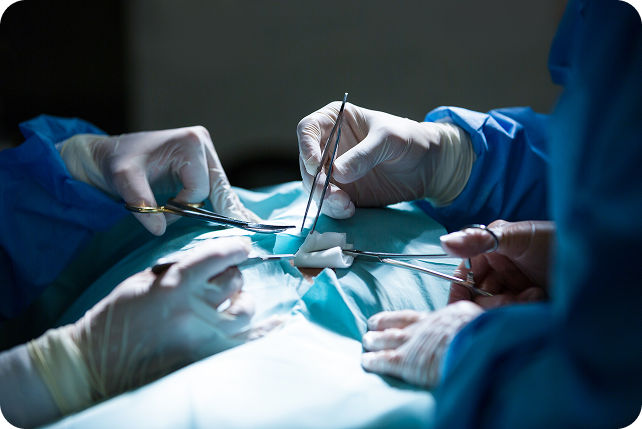Services
Laparoscopic Surgery

Laparoscopic Surgery
Minimally Invasive Surgery for Faster Recovery
Laparoscopic surgery is a modern surgical technique that uses small incisions and specialized instruments to perform operations with minimal trauma. A tiny camera (laparoscope) is inserted through one of the incisions, allowing the surgeon to view the internal organs on a screen and operate with precision. This approach is commonly used for abdominal, endocrine, and gynecological procedures.
When is Laparoscopic Surgery Needed?
Laparoscopic surgery is recommended when traditional open surgery can be avoided. It’s often used for:
- Gallbladder removal
- Hernia repair
- Appendectomy
- Thyroid and parathyroid procedures
- Diagnostic exploration of abdominal pain
Patients benefit from reduced scarring, quicker recovery, and lower risk of infection. It’s especially useful for endocrine surgeries where precision and minimal disruption are key.
The Procedure
Laparoscopic surgery is performed in a sterile operating theatre under general anesthesia. The surgeon makes 3–4 small incisions (usually less than 1 cm each) in the abdomen or neck, depending on the procedure. Through these incisions:
- A laparoscope (camera) is inserted to provide a magnified view of the internal organs.
- Surgical instruments are introduced to perform the operation.
- Carbon dioxide gas may be used to inflate the area for better visibility.
Once the procedure is complete, the instruments are removed, and the incisions are closed with absorbable sutures or surgical glue.
What Happens During Surgery?
- You’ll be given general anesthesia to ensure you’re asleep and pain-free.
- Your body will be positioned to give the surgeon optimal access.
- The laparoscope provides a high-definition view of the surgical site.
- The surgeon performs the procedure using long, thin instruments.
- The operation typically lasts 1–2 hours depending on complexity.
- After surgery, you’ll be monitored in the recovery room until you’re fully awake.
After Surgery
- You may feel mild discomfort or bloating due to the gas used during the procedure.
- Pain is usually minimal and managed with oral medication.
- You’ll be encouraged to walk within a few hours to prevent blood clots.
- Most patients can resume a liquid diet the same day and regular meals by the next morning.
- You’ll be discharged within 24–48 hours in most cases.
The Incisions
- Each incision is small and closed with absorbable sutures.
- Dressings are applied and removed within 24 hours.
- Steri-strips may be used and will fall off naturally.
- Infection is rare, but any redness or discharge should be reported.
- To minimize scarring, apply sunscreen (SPF 30+) for up to a year.
How Will I Feel After Surgery?
- You may feel tired or sore for a few days.
- Shoulder pain is common due to residual gas in the abdomen.
- Throat soreness may occur from the breathing tube used during anesthesia.
- Most symptoms resolve within a week.
- You’ll receive instructions for wound care, activity restrictions, and follow-up.
Recovering at Home
- Most patients return to normal activities within 3–5 days.
- Avoid heavy lifting or strenuous exercise for 2 weeks.
- You can resume driving once you’re off pain medication and feel alert.
- Follow-up appointments will ensure proper healing and address any concerns.